Week 13 – Dasmariñas
It was a quiet week in Tagaytay.
At least that’s what the news media told us. We weren’t allowed to get close to the city so we couldn’t observe first hand. The volcano was spewing only moderate amounts of ash and dust, no more steam plume – the lake had been completely evaporated and there was no water left in that little lake in the island in the lake. The volcano itself was still rumbling with micro-tremors happening at the rate of hundreds every day, indicating magma activity below the surface. The alert level was still Level 4, eruption imminent in hours, or days; Mild, or violent; Or maybe not at all. 98% of the inhabitants of the Barangays and towns in the immediate vicinity of Lake Taal have been evacuated, but people keep driving back to tend to their animals; and 2% refuse to leave, or feel they have nowhere to go; the authorities are looking for them to force them out. But many condo owners in Wind Residences are concerned for their property, or merely curious; voyeurs are swarming the place to get a look at the volcano in action and many merchants and hotels resumed operations in Tagaytay on the weekend defying the authorities. Still the cleanup continued even as Taal Volcano continued to mutter.
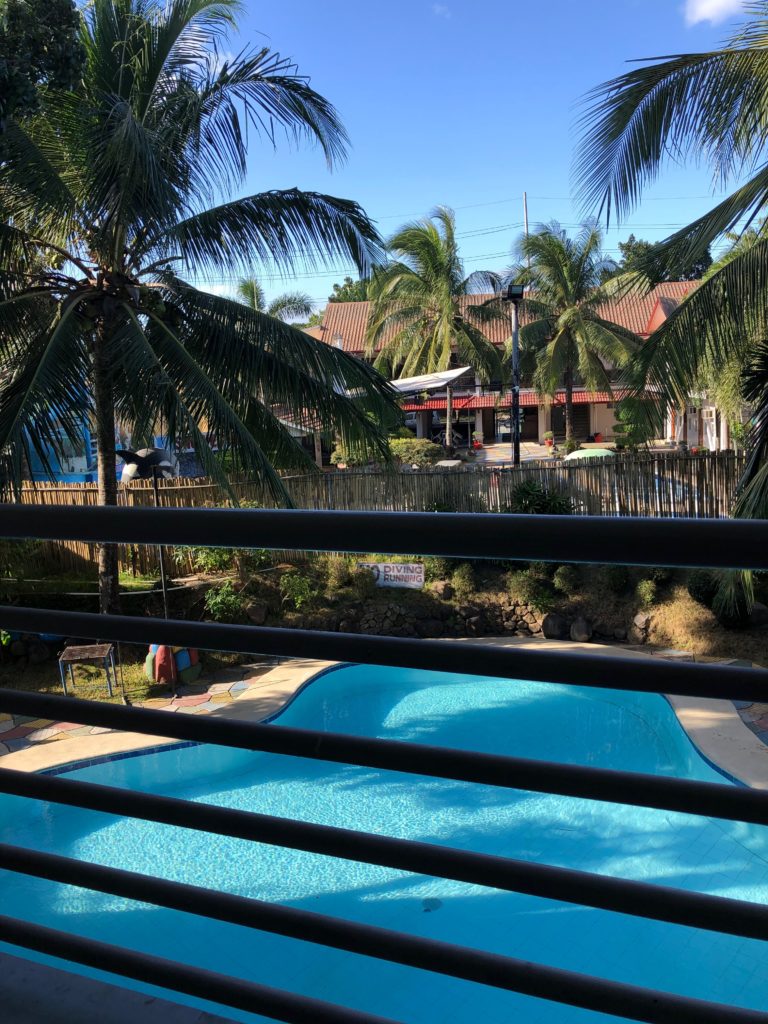
It was against this scenario that Carmen and I returned from Singapore, wondering whether we could get back to Tagaytay. As we arrived in Manila and met our trusty driver, Romel, I felt myself falling into a funk. We booked back into Qubo Qabana and registered for a day to day stay. We had a new room on the second floor with a good-sized balcony that looked over the guests’ pool, shady and breezy, quite pleasant.
The staff had been working to clean up dust that continued to drop from trees; it was a lot cleaner than when we left it five days earlier but still far from pristine. I began to calculate what it would be like to stay in this little hotel for the next two months instead of our tiny, though substantially bigger, apartment in Tagaytay.
Return to Tagaytay
I needed to get back to that apartment. We needed to survey the situation first hand and make some decisions. More importantly, I needed my meds! When we left Canada I had arranged with my pharmacist for an adequate supply of aging aides to cover the five months I was here in Philippines, but when we evacuated, I assumed we would be back in our place in a week and so took only enough to last until we returned from Singapore. And now I had run out. Wednesday we contacted the owner’s agent, and Romel, and we four made the excursion to the wasteland of Tagaytay. The five towers of Wind Residences are covered in soot, even though the staff have been shovelling and sweeping for days; there are many more days of sweeping to go. The ash has to be shovelled and removed because to wash it down the drains would devastate the sewer system as the clay caked and solidified into a hard mass. It’s a catch twenty-two: heavy rain is what is needed to wash away the dust from the laden trees and vegetation, but the roofs and drives and roadways and drainage sewers will end up being caked and likely collapse from the weight. The Philippines faces big problems over the next months in Batangas, Laguna, and Cavite Provinces.
Here are a couple of pictures I took of the ash fall east from Tagaytay on Wednesday. The sun may be shining but everything is grey.
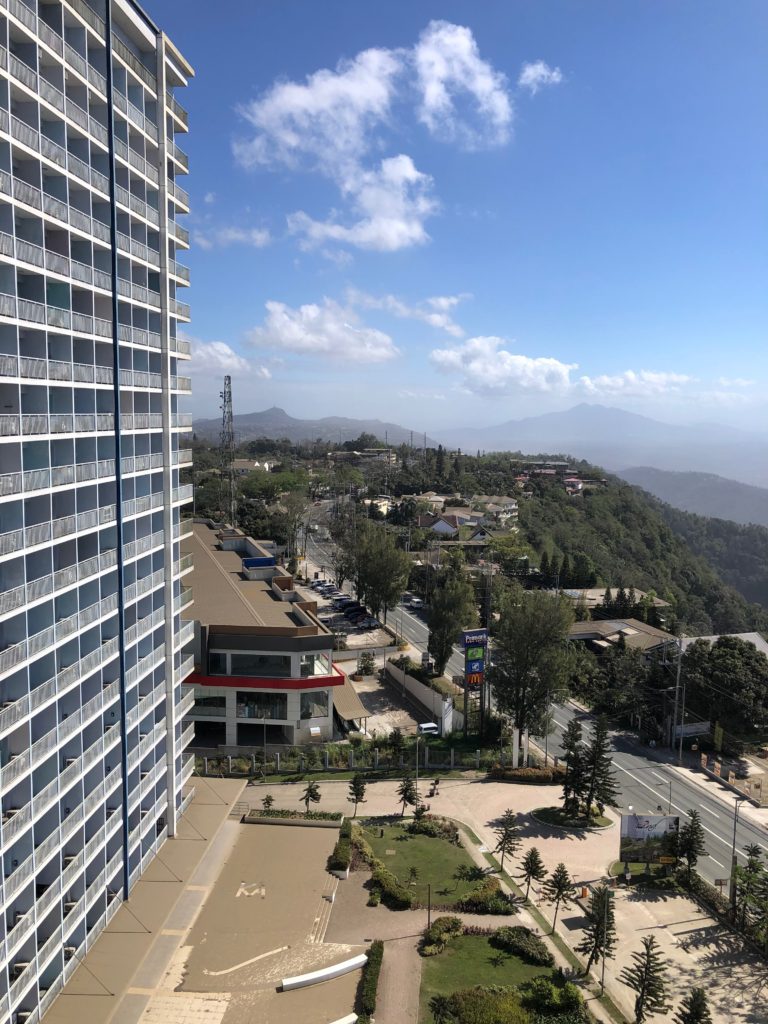

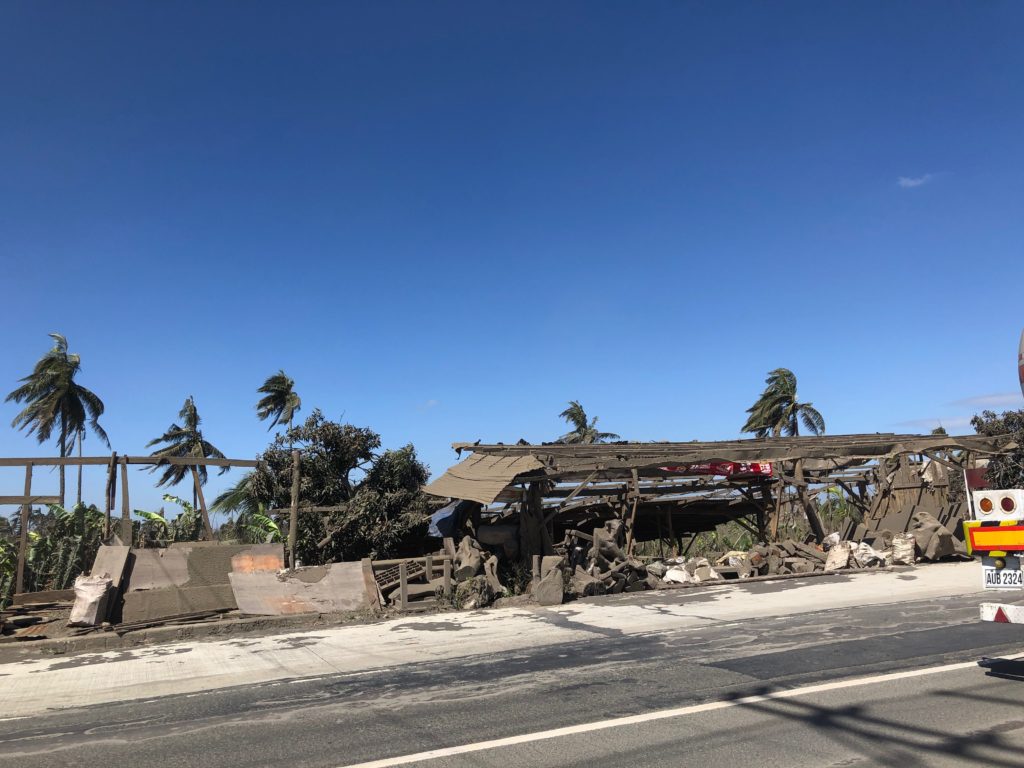

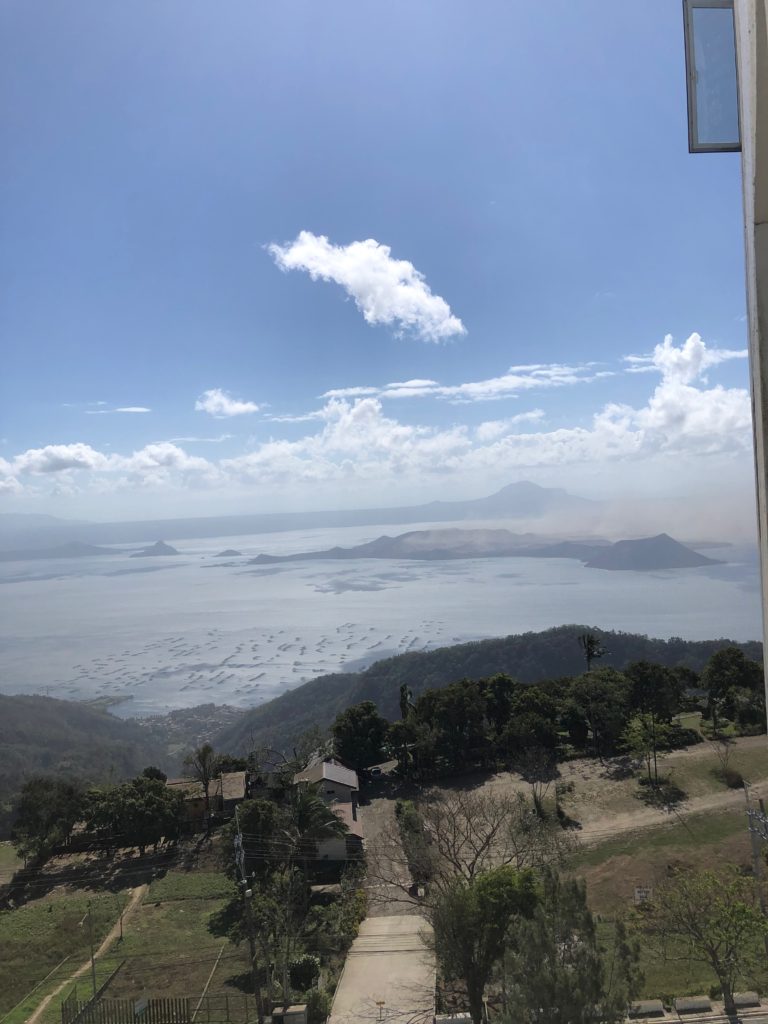
For even more drastic pictures go to the latest edition of The Atlantic magazine: https://www.theatlantic.com/photo/2020/01/colorless-landscape-around-taal-volcano/605266/
Re-entering our condo apartment was bittersweet. Amazing how attached one can get to your surroundings and routines in just a few short months. But this had become home, and going back to the familiarity of it was heartwarming, and heart wrenching. Our groceries, our books, the extra household equipment we had brought in for our long stay – the water cooler, the washing machine, the drying rack and ironing board and iron, my little desk. We walked to the bank to get some cash and to the 7Eleven to get my diario, a copy of The Philippine Star – our former daily routine. Strangely nostalgic. I wanted to visit Fit-FX gym too but that made no sense and was no doubt closed.
It seemed very unlikely now that we would be returning except to gather our remaining things and move out altogether. I had some serious negotiations to do with the owner of the unit. Even if this is force majeur, he still has my $1500 USD deposit and March’s rent! And he lives in California. And I still had to find a place for eight more weeks if I am to stay till the planned leave date of March 23. This little snowbird was beginning to think this southern sojourn more trouble than it was worth.
And then we read of 15 cm of snow in Ottawa, not to mention 2 meters in St John’s!
After a few days in our Qubo Qabana lodgings I began to feel this might serve as a new base for our Philippines sojourn. I even found the local rooster somehow comforting.
Funeral
Friday we made the trek to Bulacan Province (north of Manila) to attend the funeral of Jon, husband to Carmen’s niece, Belinda. He was to be entombed in the family plot. We had been warned it would be a very long day of driving – three hours to and through Manila and a five hour return trip in the midst of the Friday afternoon escape from Manila. It would be an even longer day for Romel, our driver. Romel had recommended we stay over in Bulacan Friday night and drive back in a more civilized fashion on Saturday. But what is there to see in Bulacan? I wouldn’t have minded visiting The Battle of Bataan site, and The Long Trek shrine, but after The Battlebox tour in Singapore, I knew Carmen had had enough of WWII. I suggested to Romel it was too bad there wasn’t a nice big bridge across the channel to Manila Bay from Bataan to Cordero Island and on to Cavite Point. Ha, said Romel, already in the national plan! But when will it be built?!
Romel arrived at ~ 9:00 in Dasma and we headed back into Manila. The Funeral was scheduled for 2:00 pm in the village of St Raphael; we had plenty of time, so took our time wending our way through Manila. It’s part of my new-found acceptance of Filipino life that things don’t happen quickly so allow extra time and see what you can make of it. And with Romel as our guide we saw some new parts of Manila we might not otherwise have seen, though, from a distance, there is not much of Manila to see but smog. Up close though were more interesting things: the students at Universidad Santa Tomas, the flower markets and lechon markets of Santa Cruz, Manila; the racks and racks of roasted pigs in stall after stall was fascinating, if a little unnerving. around noon we stopped for some lunch in an expressway service centre – a Kenny Rogers Roasters of all places – and prepared ourselves for our last leg to Santa Raphael, 30 minutes away. But at 1:00 we got a call from Carmen’s son that the service was actually at 1:00 and the cemetery part was 2:00. Hmmm, another test of Doug’s acclimation to Filipino life. Without rushing we finished lunch, and headed off to Santa Raphael, arriving in the quaint Spanish village with its ancient clapboard houses, around 1:30. The service was just underway.
And so began my experience of what is evidently a long cultural tradition of funerals in The Philippines. I could see right away the heavy influence of 350 years of Spanish culture and the Roman Catholic Church. I may be an agnostic Unitarian but I know my history and my cultural heritage. The whole experience was very moving. The mass itself is an ancient tradition; the open coffin (whereas in Canada an urn of ashes is now much more common), the gathering around the coffin, the weeping and dolor as the coffin was closed, the pallbearers carrying the coffin up the aisle to the waiting hearse; the crowd gathering behind the hearse and walking slowly behind it, the somber music blaring from the hearse’s sound system!; reaching the cemetery a few short blocks away up a gentle hill, the rows upon rows of mausoleum ‘houses’; the positioning of the coffin next to the crypt, the re-opening it for one last look, which, to my mind, only served to add to the widow’s agony; the closing of the coffin once again, the passing of confused or terrified little children over the coffin to catch the deceased’s spirit; the sliding of the coffin into the crypt, and finally to brick the crypt in with cinder block and mortar. It seemed to me the whole affair was designed to extract maximum anguish from the grieving widow. I reflected on this a while and thought of my own anguish at my wife’s funeral. Maybe there is no escaping the pain of the last goodbye no matter the culture.
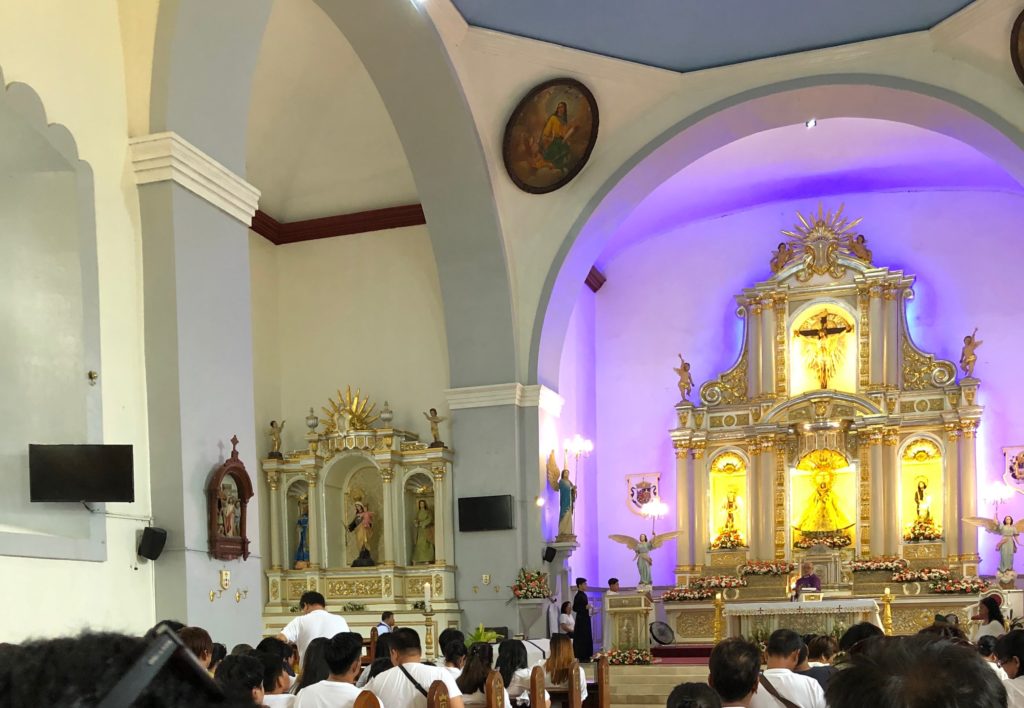

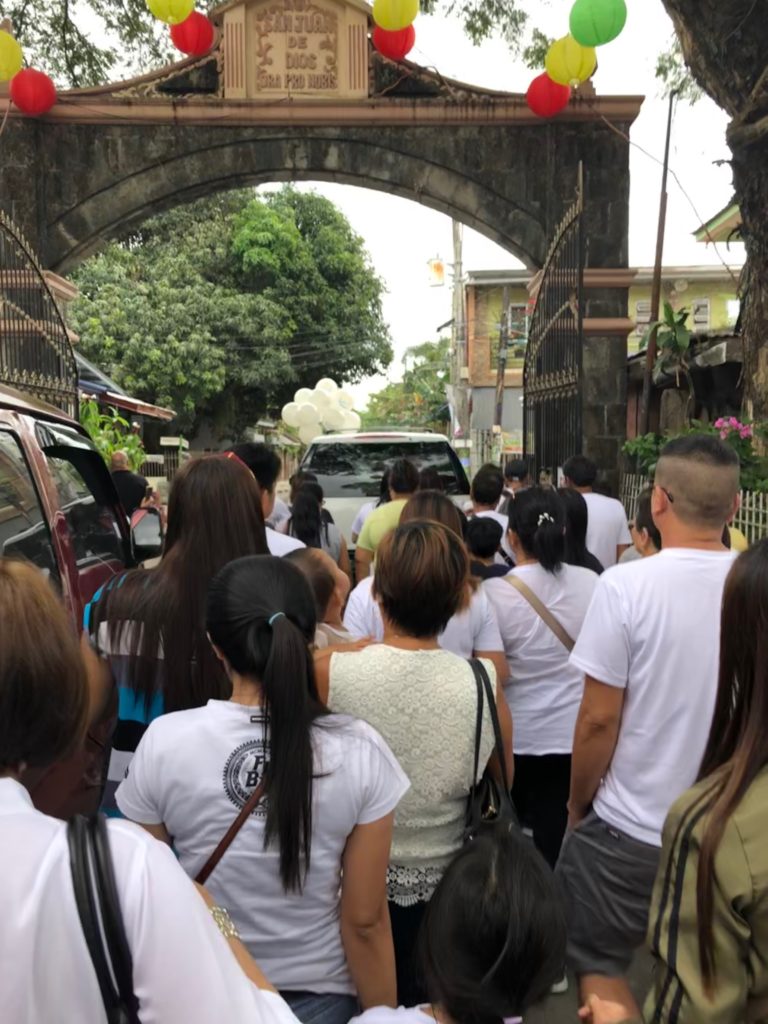
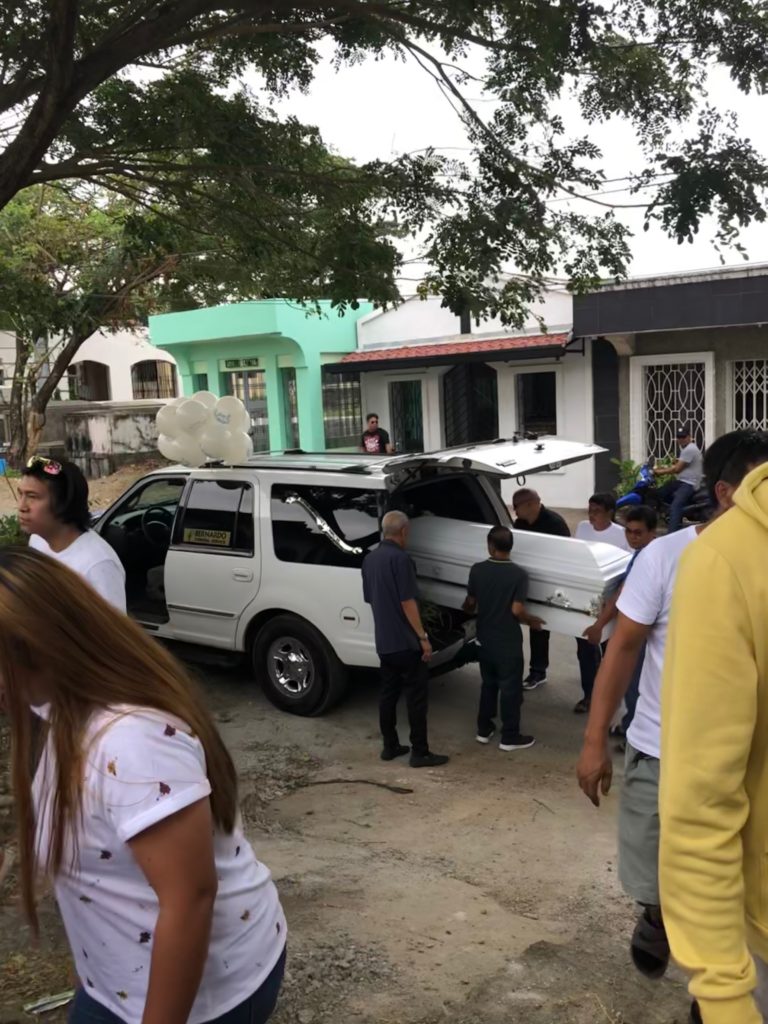
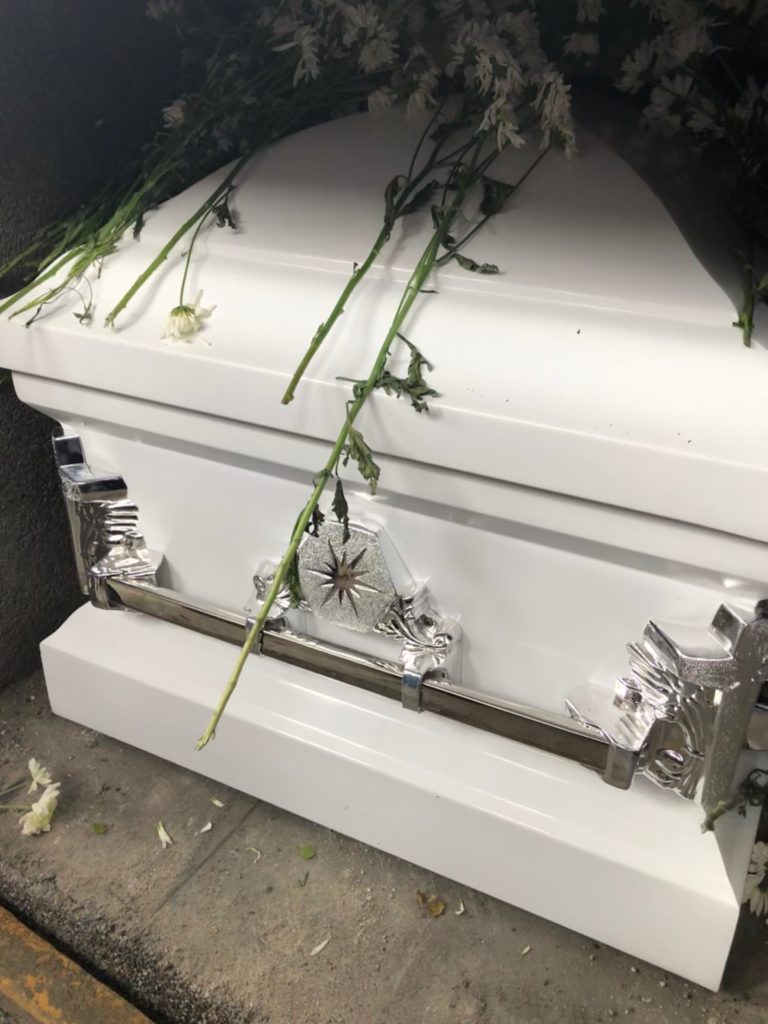
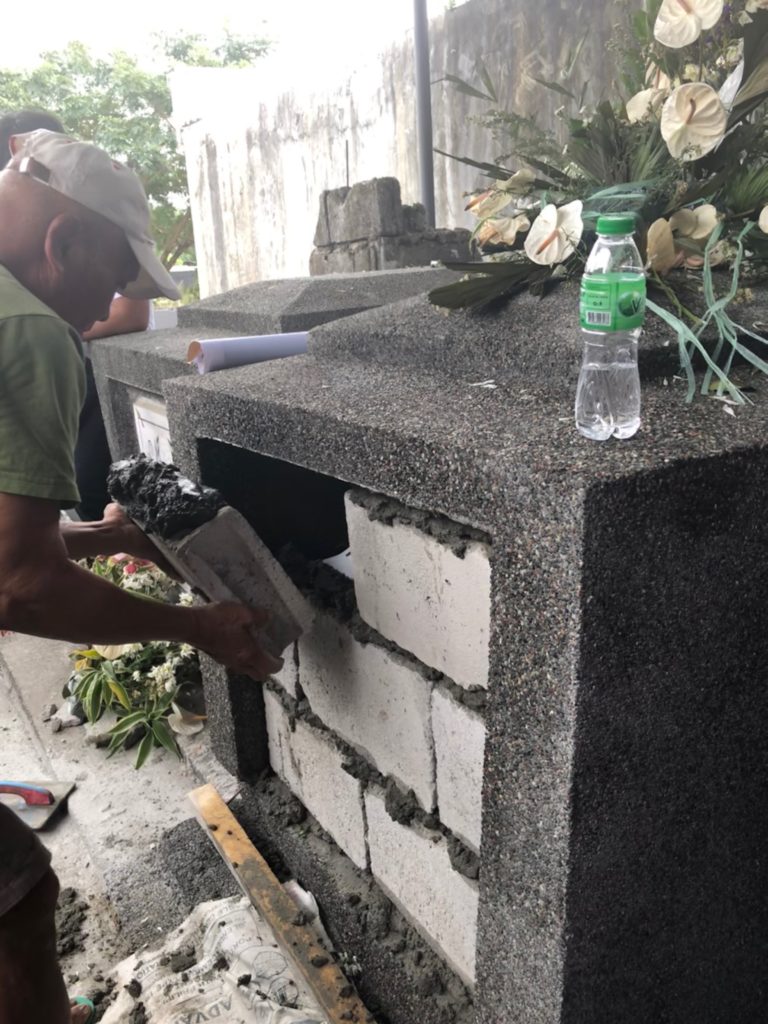
We didn’t stay for the inevitable funeral feast, we faced a long drive back to Dasmarinas, Cavite. Besides, some traditions are hard for me to give up: I knew there would be no minced ham sandwiches produced by the Ladies’ Auxiliary at this affair.
And last, January 25 – Robbie Burns Day, not much celebrated here in The Philippines – is also grandson Victor Beynon’s birthday. Because of the Taal Volcano I was too distracted to send him a card and a gift from The Philippines and so had to content myself, and hopefully Victor, with an e-card from Jacquie Lawson and a money transfer to his mother. Happy Birthday Victor.
